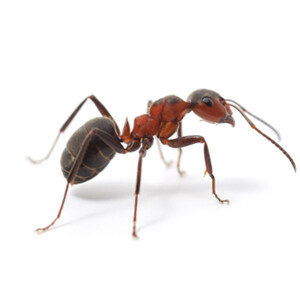Characteristic
SIZE:
Acrobat ants Ranges from one-8th of an inch to more than 1-fourth of an inch in length. The most commonly found species are observed at the smaller end of this size level.
COLOR:
Ranges from black colored to dark brown to red and black color. The smaller types are generally uniformly dark in color. A larger species, typical in Texas, is red-colored also black color.
BEHAVIOR:
Whenever excited or interrupted, the acrobat ant workers run about with their abdomens held high above their heads. Like most ants, acrobat ants develop well-defined trails between the breeding ground and water and food sources. They feed on a wide variety of foods, but the workers are fond of the sugary honeydew produced by aphids, scales and mealybugs found feeding on many plants and plants. Fruit trees, roses and many shrubs function as hosts for aphids and may contribute to ant infestations in buildings. The majority of infestations inside are the result of workers attempting to find food.
Habitats
Acrobat ants are just like carpenter ants for the reason that they prefer to nest in moist or rotted wood. Colonies are most often found in tree holes, dead limbs, stumps and logs. Decaying areas in fences, decks and railings may also be nesting places. The majority of infestations of acrobat ants come from outdoor nests; although, if moist or rotted wood exists inside the house as a result of water leakages, this particular ant will readily nest indoors. Such interior nests are normally found around the perimeter – in soffits, door frames and skylights.
Controlling Acrobat Ants
Acrobat ants will be controlled by finding and treating wood the location where the ant colonies are located. Frequently, the nest may be located far on top of the ground in a tree in which it is unavailable to direct treatment. In cases like this, limiting interior penetration of ant trails is very important. Fixing water Repairing water leaks and drying out wet wood in your home will help lessen infestations of each acrobat and carpenter ants. Improving attic and crawl space ventilation is also important in limiting acrobat ant infestations. Basic tips for limiting ant infestations consist of:
- Eliminating piles of lumber, bricks or other debris that could serve as a nesting site for ants.
- Maintaining landscape mulch no more than two ins thick and at least 12 inches from the foundations.
- Ensuring the landscape sprinkler system will not spray directly onto the foundation.
- Securing as many cracks in the building’s exterior as possible.
- Maintaining tree and shrub branches trimmed down to prevent them from coming in con
